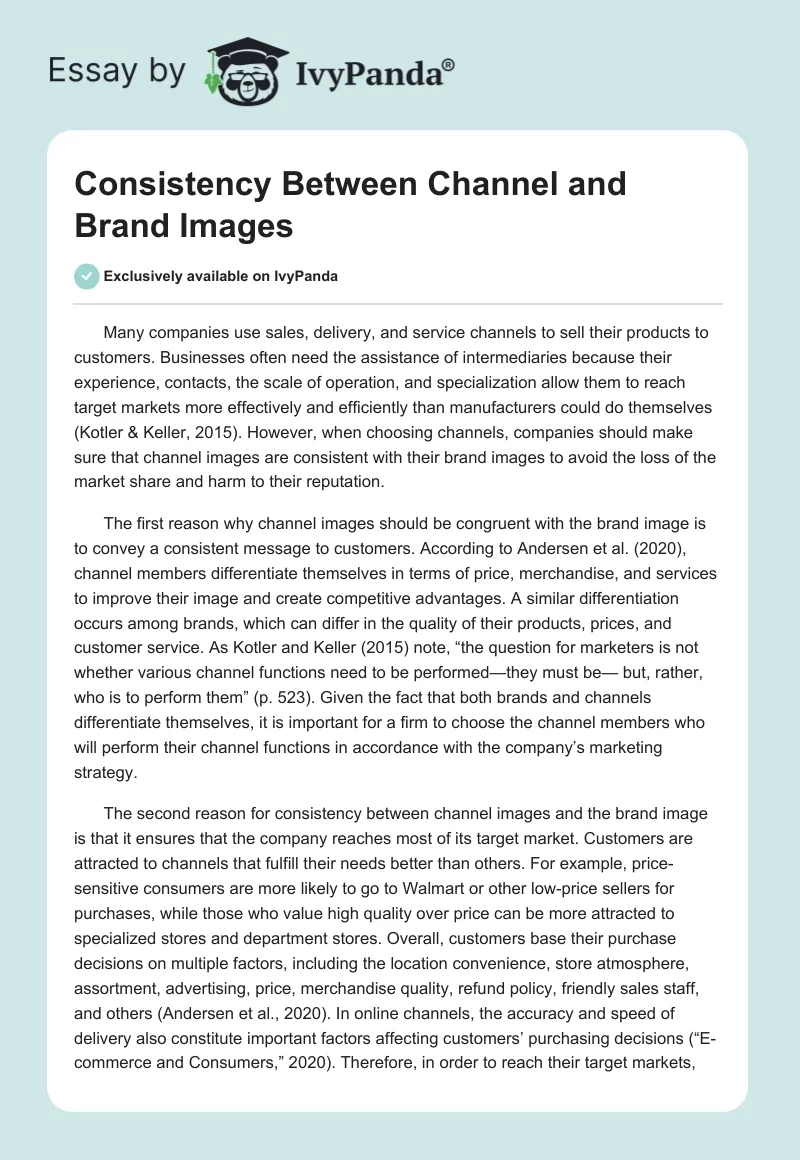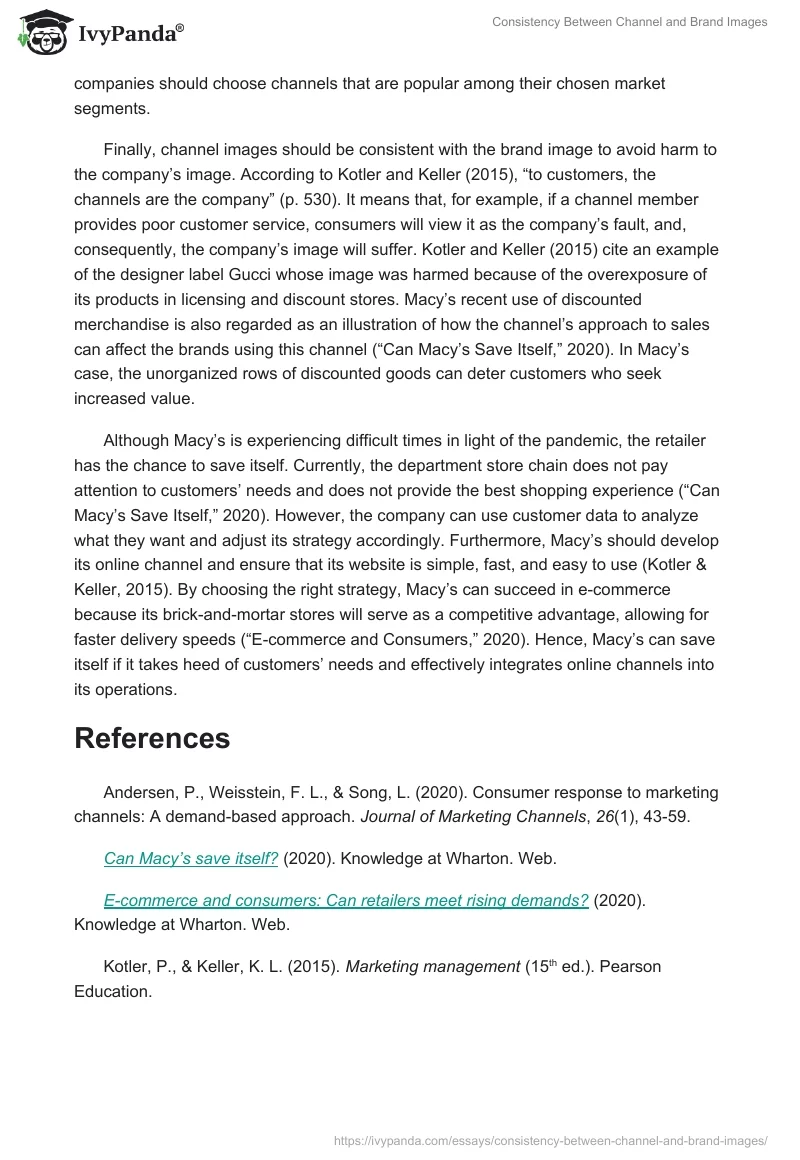Many companies use sales, delivery, and service channels to sell their products to customers. Businesses often need the assistance of intermediaries because their experience, contacts, the scale of operation, and specialization allow them to reach target markets more effectively and efficiently than manufacturers could do themselves (Kotler & Keller, 2015). However, when choosing channels, companies should make sure that channel images are consistent with their brand images to avoid the loss of the market share and harm to their reputation.
The first reason why channel images should be congruent with the brand image is to convey a consistent message to customers. According to Andersen et al. (2020), channel members differentiate themselves in terms of price, merchandise, and services to improve their image and create competitive advantages. A similar differentiation occurs among brands, which can differ in the quality of their products, prices, and customer service. As Kotler and Keller (2015) note, “the question for marketers is not whether various channel functions need to be performed—they must be— but, rather, who is to perform them” (p. 523). Given the fact that both brands and channels differentiate themselves, it is important for a firm to choose the channel members who will perform their channel functions in accordance with the company’s marketing strategy.
The second reason for consistency between channel images and the brand image is that it ensures that the company reaches most of its target market. Customers are attracted to channels that fulfill their needs better than others. For example, price-sensitive consumers are more likely to go to Walmart or other low-price sellers for purchases, while those who value high quality over price can be more attracted to specialized stores and department stores. Overall, customers base their purchase decisions on multiple factors, including the location convenience, store atmosphere, assortment, advertising, price, merchandise quality, refund policy, friendly sales staff, and others (Andersen et al., 2020). In online channels, the accuracy and speed of delivery also constitute important factors affecting customers’ purchasing decisions (“E-commerce and Consumers,” 2020). Therefore, in order to reach their target markets, companies should choose channels that are popular among their chosen market segments.
Finally, channel images should be consistent with the brand image to avoid harm to the company’s image. According to Kotler and Keller (2015), “to customers, the channels are the company” (p. 530). It means that, for example, if a channel member provides poor customer service, consumers will view it as the company’s fault, and, consequently, the company’s image will suffer. Kotler and Keller (2015) cite an example of the designer label Gucci whose image was harmed because of the overexposure of its products in licensing and discount stores. Macy’s recent use of discounted merchandise is also regarded as an illustration of how the channel’s approach to sales can affect the brands using this channel (“Can Macy’s Save Itself,” 2020). In Macy’s case, the unorganized rows of discounted goods can deter customers who seek increased value.
Although Macy’s is experiencing difficult times in light of the pandemic, the retailer has the chance to save itself. Currently, the department store chain does not pay attention to customers’ needs and does not provide the best shopping experience (“Can Macy’s Save Itself,” 2020). However, the company can use customer data to analyze what they want and adjust its strategy accordingly. Furthermore, Macy’s should develop its online channel and ensure that its website is simple, fast, and easy to use (Kotler & Keller, 2015). By choosing the right strategy, Macy’s can succeed in e-commerce because its brick-and-mortar stores will serve as a competitive advantage, allowing for faster delivery speeds (“E-commerce and Consumers,” 2020). Hence, Macy’s can save itself if it takes heed of customers’ needs and effectively integrates online channels into its operations.
References
Andersen, P., Weisstein, F. L., & Song, L. (2020). Consumer response to marketing channels: A demand-based approach. Journal of Marketing Channels, 26(1), 43-59.
Can Macy’s save itself? (2020). Knowledge at Wharton. Web.
E-commerce and consumers: Can retailers meet rising demands? (2020). Knowledge at Wharton. Web.
Kotler, P., & Keller, K. L. (2015). Marketing management (15th ed.). Pearson Education.


